Takayuki Tateishi witnessed the emergence of the Japanese national team during his country’s home World Cup in 2002. He saw the first wave of players move to Europe following that run to the last 16 and, as general manager of top-flight club FC Tokyo, continued to sell players at a cut-price rate in the hope it would propel Japan to greater heights.
Advertisement
But in 2017, with the national team having failed to make the next leap and the value of Japanese players stagnant, Tateishi decided that it was time to branch out after two decades of growing the game from within.
He made a proposal to Keishi Kameyama, the billionaire owner of e-commerce company DMM.com: take over a mid-tier European club and act as a bridge between Japan and the upper echelons of football.
DMM purchased 20 per cent of Belgian club Sint Truiden (STVV) in June 2017 before assuming full control the next year, with Tateishi installed as CEO. Since that day he has started to build a team that embraces the new opportunity while respecting the club’s history, balancing Japanese players and local talents.
“The language and culture are different but if the first couple of years of adaptation to Europe go well, players can take the big step,” Tateishi tells The Athletic.
“Takehiro Tomiyasu was the first player we purchased. The second player was Wataru Endo and then we signed Daichi Kamada. These three players improved the awareness of the club and we have become the natural home for Japanese players.”
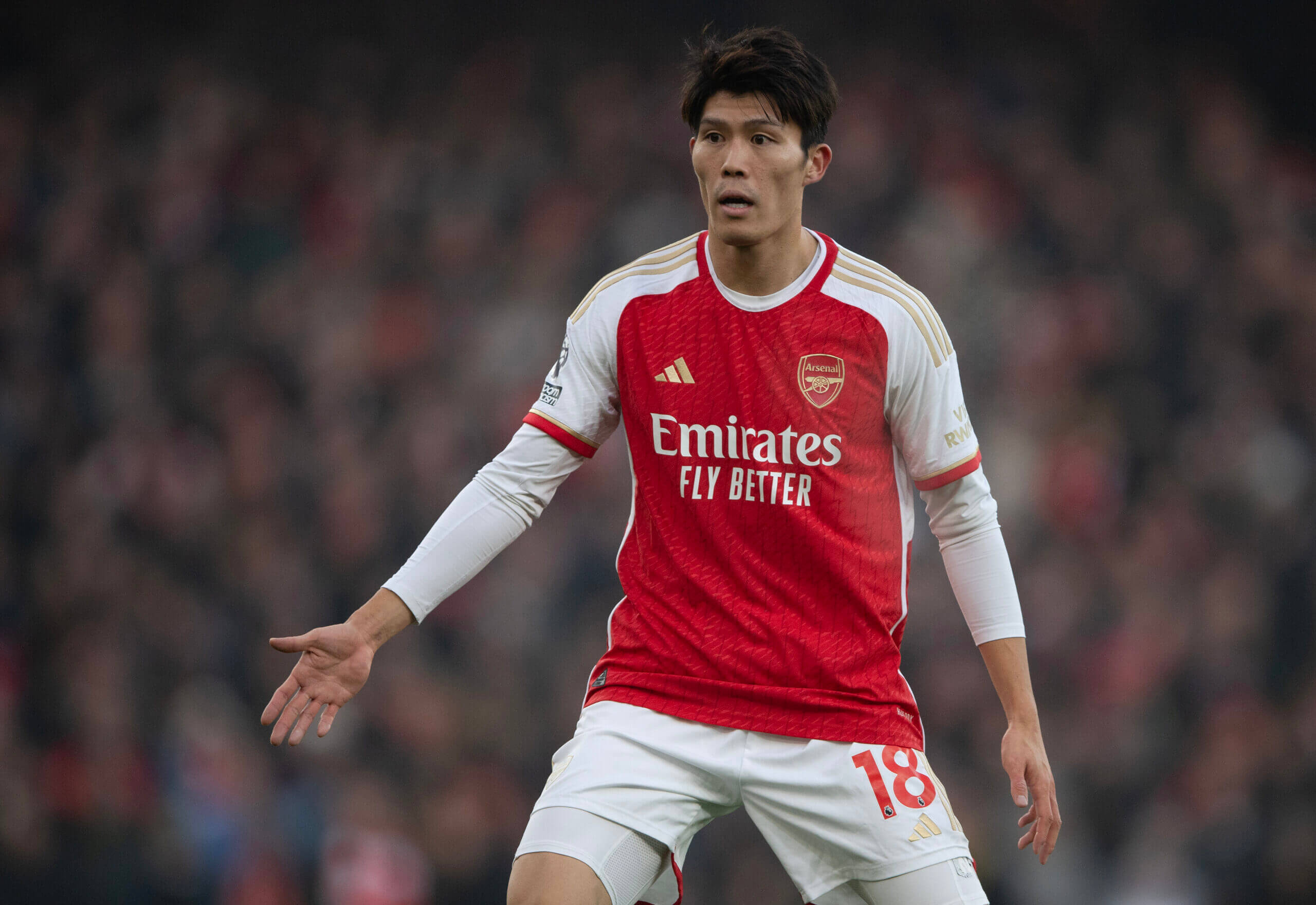
Now at Arsenal, Liverpool and Lazio, the trio are part of a fast-growing pool of players operating in Europe’s top-five leagues. Eleven of the squad named for the Asia Cup compete at that level.
At the 2010 World Cup, only four players were based outside of Japan but that insularity, and perhaps Europe’s coldness towards the J.League, has changed.
At the World Cup in Qatar, only six of the 26-man squad still played in their home nation. Taking only the top flight of each country into account, there are 16 Japanese players in Belgium, nine in Germany, seven each in Scotland, Portugal and the Netherlands, and more in England, the United States, Poland, Switzerland and France.
| Country | Japanese players |
|---|---|
Belgium | 16 |
Germany | 9 |
Scotland, Portugal, Netherlands | 7 |
Montenegro | 4 |
England, U.S., Poland | 3 |
Switzerland, France | 2 |
Spain, Italy, Croatia, Slovakia, Denmark | 1 |
STVV account for seven of those players in Belgium but it would be a mistake to assume they have a huge network of scouts operating in Japan.
“We have none. I have some connections with the federations and I also speak with the head coaches and the J.League to scout players,” says Tateishi.
“On the weekend, I watch five or six games in the J1 (the J.League’s top flight). We have five partnership clubs so we get the information we need from them: Avispa Fukuoka (J1), FC Tokyo (J1), Consadole Sapporo (J1), Oita Trinita (second-tier J2) and Fagiano Okayama (J2).”
Advertisement
The arrival of Japanese players into Belgian football made others take notice, including Molenbeek’s head of recruitment Tom Chambers, who moved from Barnsley to Oostende in 2020.
“All of a sudden, a trend started to appear. Koji Miyoshi (now at Birmingham City) and other Japanese players who had made the transition directly were standing out a mile,” says Chambers.
“I thought, ‘OK, well, this is a completely new market to me but they are costing €500,000 to €1.5 million (£430,000-£1.3m; $550,000-$1.6m). This is insane value. How do we get involved in this?’.”
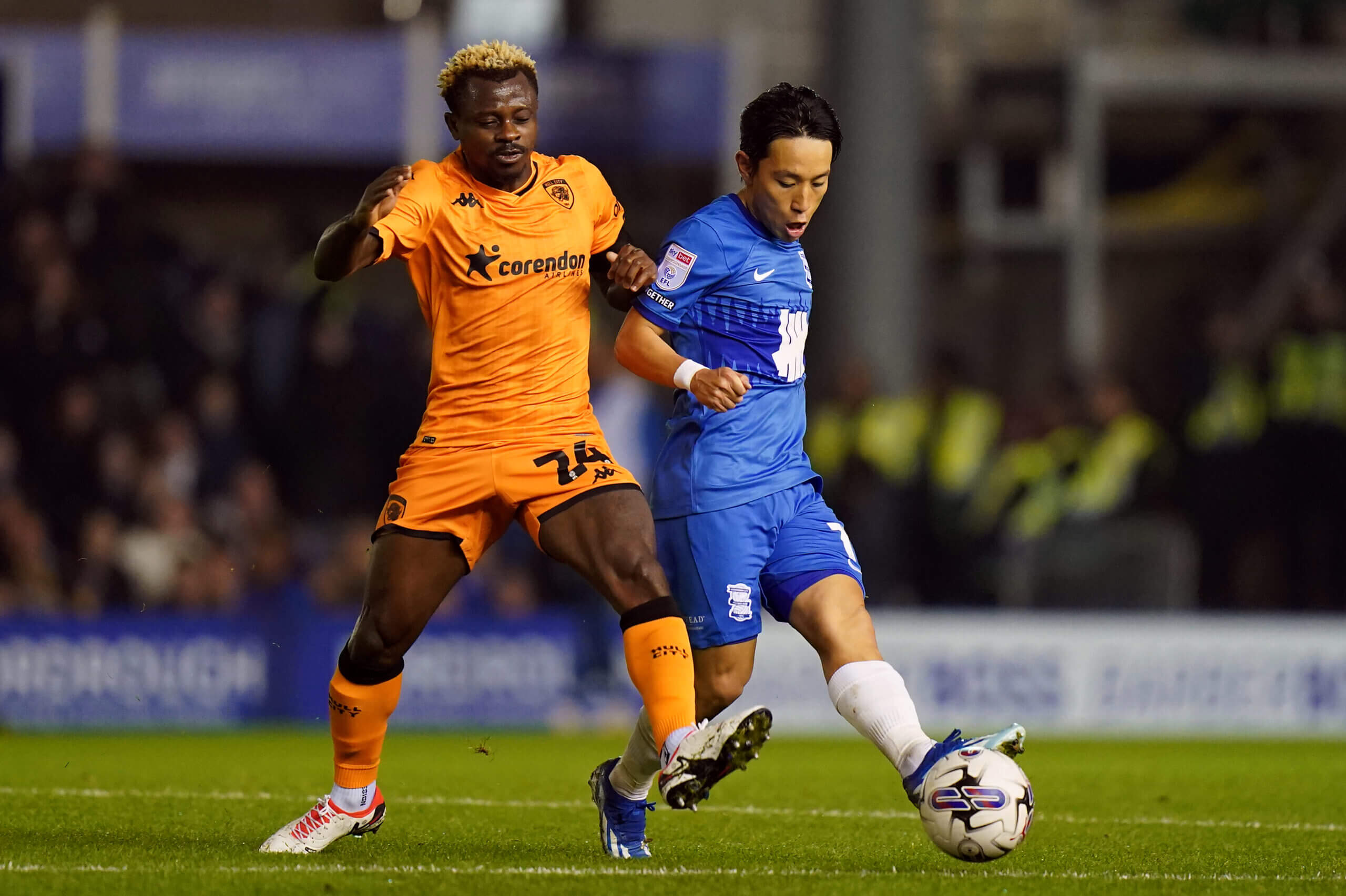
With comprehensive video footage available of all teams in the top two divisions, there are no longer barriers to European clubs scouting Japanese talents.
Chambers commissioned a data dive into J1 to draw up lists of the best players in each position. Tatsuhiro Sakamoto was one of their favoured wing-back options and the first call he had with his agency brought a pleasant surprise.
“It was quite a weird moment,” Chambers says. “They said he was available for a loan with an option to buy for only €1million. Are we interested? Of course! He went on to be one of the best players in the league in that position and we sold him on to Coventry City, where he’s hitting a purple patch.”
Chambers was the first club scout to ask data company Skill Corner to evaluate the J.League’s physical output so they could benchmark it against other competitions, but it has become a more popular request recently.
“We haven’t been to Japan because of budget constraints but we realised the league translations are extremely strong in the best players. Historically, it’s not been rated but once people see that this league is producing very good players, attitudes change,” he says.
“Is this the best value market in the world? Right now, yes, but there is a finite pool. The J.League is slower-paced and not as physical because there are few long balls played in games, if any. But it is probably one of the best technical leagues in the world.
Advertisement
“The best bet is if the players come to Belgium, Poland, leagues of that level and have a really good 12-18 month integration period where they get used to a more intense, vertical style of play and also get used to the culture. I don’t see many capable of going straight to the Premier League unless they are a freak like Kaoru Mitoma who only needed a year’s loan at Union Saint-Gilloise”.
The lack of English can still be a barrier when doing negotiations or when a player tries to settle in a new country. The use of translation apps and intensive language classes is commonplace at clubs.
Japanese agencies are now encouraging their top younger players to prepare themselves for the move by taking pre-emptive lessons. At STVV, the team language is English.
“In their first few weeks, I often take them out to eat and explain the differences between Japanese football and European football but also the culture. We are a bit shy and in Europe, you need to say what you have to say,” says Tateishi.
He believes he has helped elevate the value of Japanese players but as a member of the J.League’s technical group, he closely tracks the careers of all potential squad members. He plans to analyse the impact of Ange Postecoglou on Celtic once the career paths of Kyogo Furuhashi, Reo Hatate and Daizen Maeda play out in the coming years.
Postecoglou, now coach of Premier League team Tottenham Hotspur, has shared his fondness for the market and encouraged others to be open to it, having been shocked by the level of Mitoma when he entered the J.League straight from university.
The Australian manager won the J.League with Yokohama F Marinos in 2019 and signed six Japanese players as he led Celtic to five of the six domestic trophies in his two seasons in Scotland.
Asia is a diverse continent but Japan has, by a significant margin, the most players plying their trade in Europe.
South Korea is closest but two factors prevent it from becoming as well-mined a market as Japan. The average salary in the K League is considerably greater than in the J.League. There is also the small matter of the country’s military conscription, which means that if a player goes to Europe they need to return home to fulfil their service before the age of 26 — unless they earn an exemption like Son Heung-min did by winning gold in the 2018 Asian Games.
Advertisement
South Korea has four players in the Premier League, with the success of Son at Tottenham Hotspur helping pave the way for others, such as Hwang Hee-chan, who has 11 goals in 21 games for Wolves.
Cho Gue-sung, whose performances and good looks brought him fame at the 2022 World Cup, had interest from Leicester City, Watford and Celtic joined Midtjylland in Denmark, who picked him up for a relatively modest £2.6million ($3.27m).
Germany traditionally had the strongest links to the Asian market. Agents such as Thomas Kroth helped guide Shinji Kagawa to Europe but not many Bundesliga clubs even have a person based in Japan. Manchester United are one of few to have had a long-term pair of eyes in Tokyo.
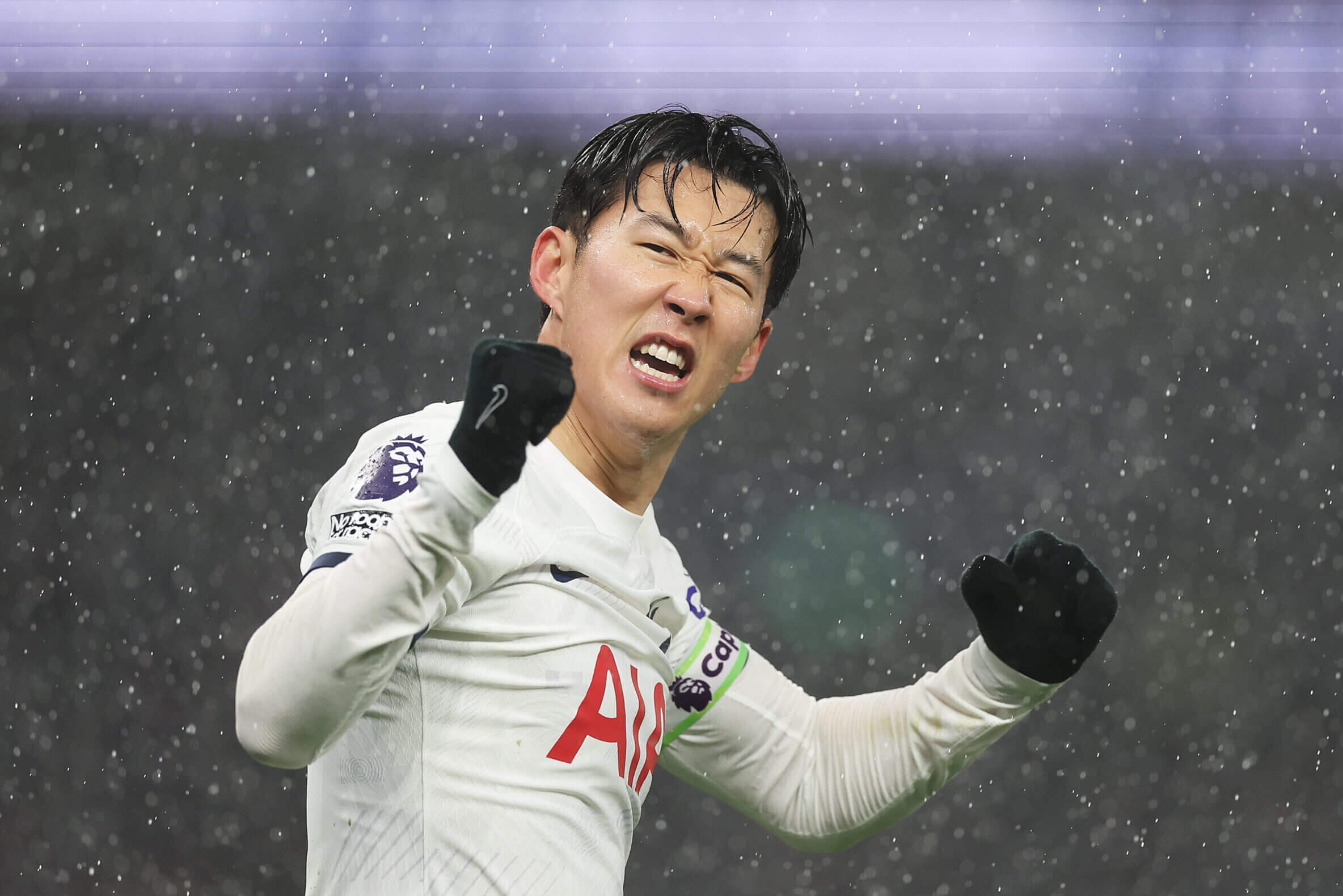
English clubs are still hesitant to take players directly from Japan or Korea but one Premier League scout says they have developed strong data models to pick out the players who could translate into English football.
However, the scale of the adaptation means it is about finding them at a young age so they have time to integrate and develop while still having sell-on potential.
Southampton have been out to Japan to scout live. Their position as part of the Sport Republic umbrella may give them more avenues to explore as the players could move to one of their sister clubs as a stepping stone before arriving in England.
Similarly, at the City Football Group, when any player aged 16-21 in the world plays their first 500 senior minutes, an alert comes on their database. They are immediately added to a list for one of the scouts to watch and decide whether they should be tracked for any one of their network clubs.
Unique Sports Group’s head of operations Ian Ryder was the agent who brokered the deals that brought Tomiyasu from Bologna to Arsenal and Hwang from RB Leipzig to Wolves.
He also did the deals to take Japanese midfielder Shion Homma from Albirex Niigata to Club Bruges and Korean midfielder Bae Jun-ho from Daejeon Hana Citizen to Stoke City.
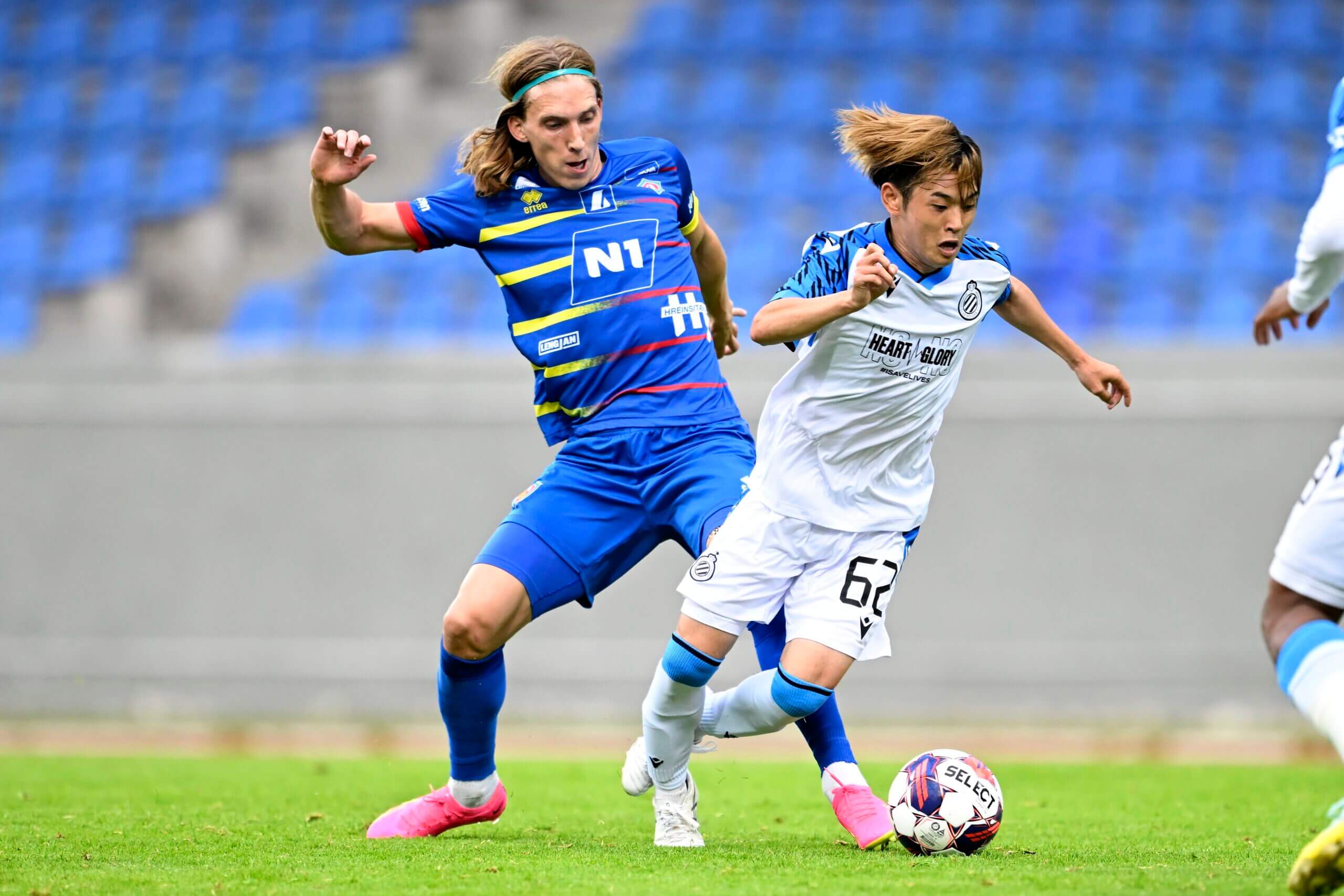
So, why is Japan becoming such a popular market for clubs?
“The success of Celtic and players in the Premier League has helped clubs gain confidence in the market,” Ryder tells The Athletic.
“The change in the work permit rules following Brexit, which allow the direct transfer of players from regions that, pre-Brexit, would have been impossible, has also opened up the market.
Advertisement
“Several English clubs have asked me to go over with them and introduce them to the market or to help connect the pieces in a deal for a player they like on video.
“The clubs are a dream to work with. Trying to get a club to tell you a price for their player in the UK is almost impossible now but (in Japan) they will just give you a number and if you don’t match it then you don’t get the player.”
The brand of football employed by Postecoglou at Celtic and Spurs has further legitimised the J.League as somewhere clubs can shop. In 2021, Furuhashi, Hatate and Maeda joined from Japan and instantly became integral members of Celtic’s treble-winning team. The Spurs coach signed three more Japanese players and one Korean player during his two seasons in Glasgow.
Hearts are the other team in Scotland to have targeted countries who play in the Asian Cup. Australia has faded as a talent market for top leagues but it has become important for sporting director Joe Savage, as has Japan. They have signed four Australians since the 2020-21 season and two Japanese players, Yutaro Oda and Kyosuke Tagawa.
“A lot of it is done by video but we have people go over there we can ask to go and watch,” says Savage. “We have our KPIs that tell us what we are looking for and Will Lancefield, our head of recruitment, will be getting out to Japan and Australia to watch live.
“We aren’t looking at it for centre-backs, as it’s a direct style of play here and they don’t face those types of strikers in Japan. We’re looking at the league for wingers, forwards and full-backs because they tend to be dynamic and hard-working. It’s speed of thought and how quick they are that we are looking at.”
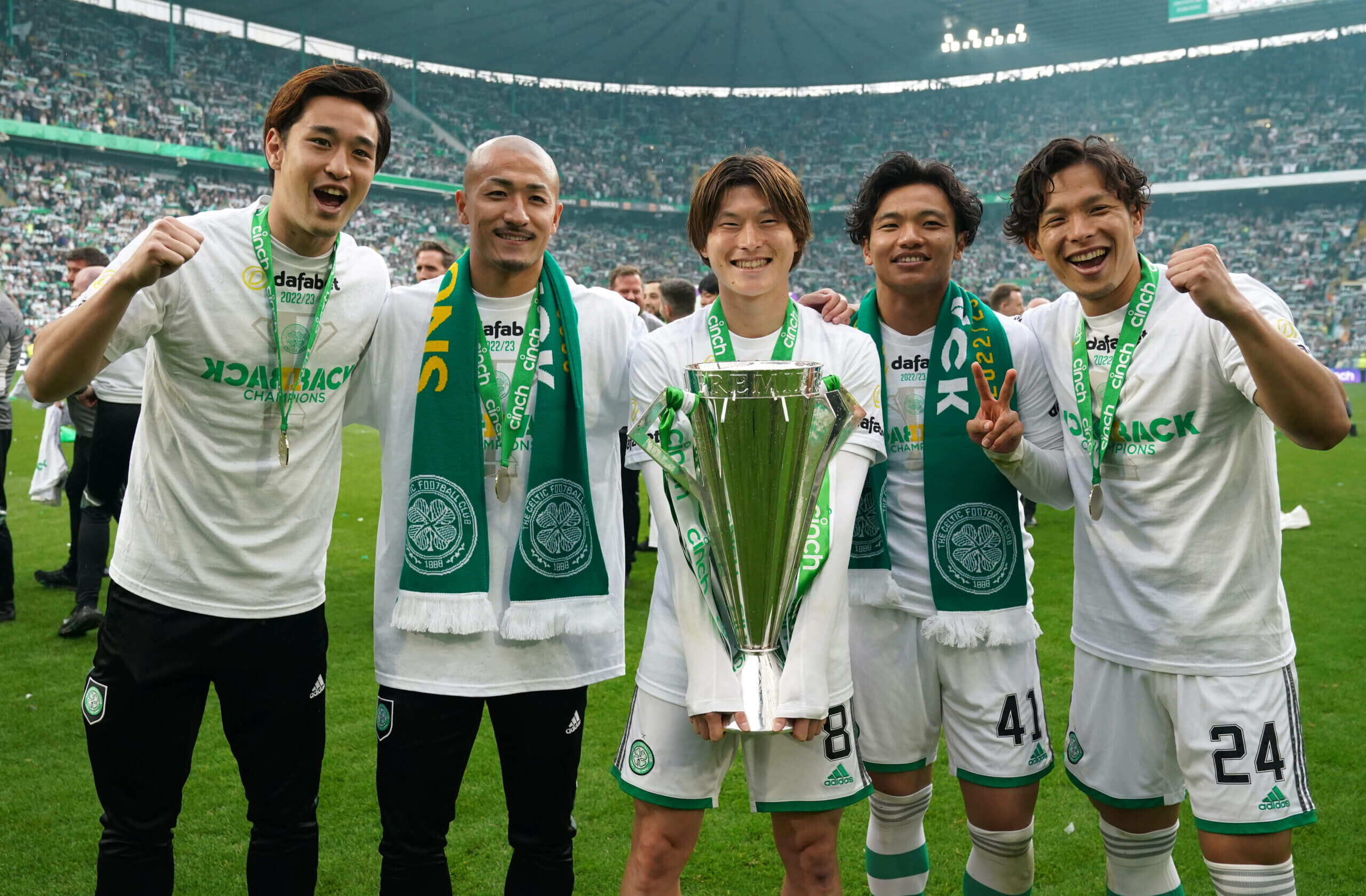
Savage has found working with Japanese clubs and agents to be a refreshing experience.
“A lot of the players have small buyouts as the agents and clubs negotiate it to between €500,000 to €1million. We got Oda for €400,000 as his contract was running down, and that is from the champions, Vissel Kobe. They didn’t want to lose him but it was such an honest and open negotiation,” he says.
“We thought we had Kanji Okunuki signed in the summer as we were working with an intermediary (not his agency UDN) but then Nurnberg from 2.Bundesliga blew us out of the water. They phoned to explain. You want to be annoyed but you can’t be because they were so open and honest.”
The youth football environment is very different in Japan compared to in Europe, where professional clubs tend to clean up the best talent at an early age and hope they rise through the ranks to the first team.
High schools remain a big part of the country’s football ecosystem. New York-born Tom Byer, who finished his professional player career in Japan during the 1980s and has been based in Tokyo ever since, played a key role in transforming the culture of player development in Japan.
Advertisement
“Last year, 40 per cent of the kids getting contracts in the J.League last year came from high schools and 60 per cent were coming from the actual J.League academies,” Byer tells The Athletic.
“It’s a pathway because Japanese high schools specialise in football from when the kids join. These schools and universities train and probably play more games than a professional club does.
“Japanese culture allows that when a six-year-old boy or girl joins the football club, they train at a minimum of four times a week, sometimes two hours to three hours per session. The season lasts basically 45 weeks a year. There is a cost to that: overtraining, burnout, injuries, some mental health issues. But there are iconic high schools here that are more famous and have more status than J1 clubs.”
With no off-season and no class barrier to playing, since it costs almost nothing to play football in Japan, Byer believes the mounting numbers of Japanese players thriving in Europe’s top leagues can be traced back to the technical revolution of the 1990s.
Byer was featured on Japan’s No 1 show for children every weekday morning for 14 years presenting a technical skills show and in the No 1 comic that sold 1.3million copies per month.
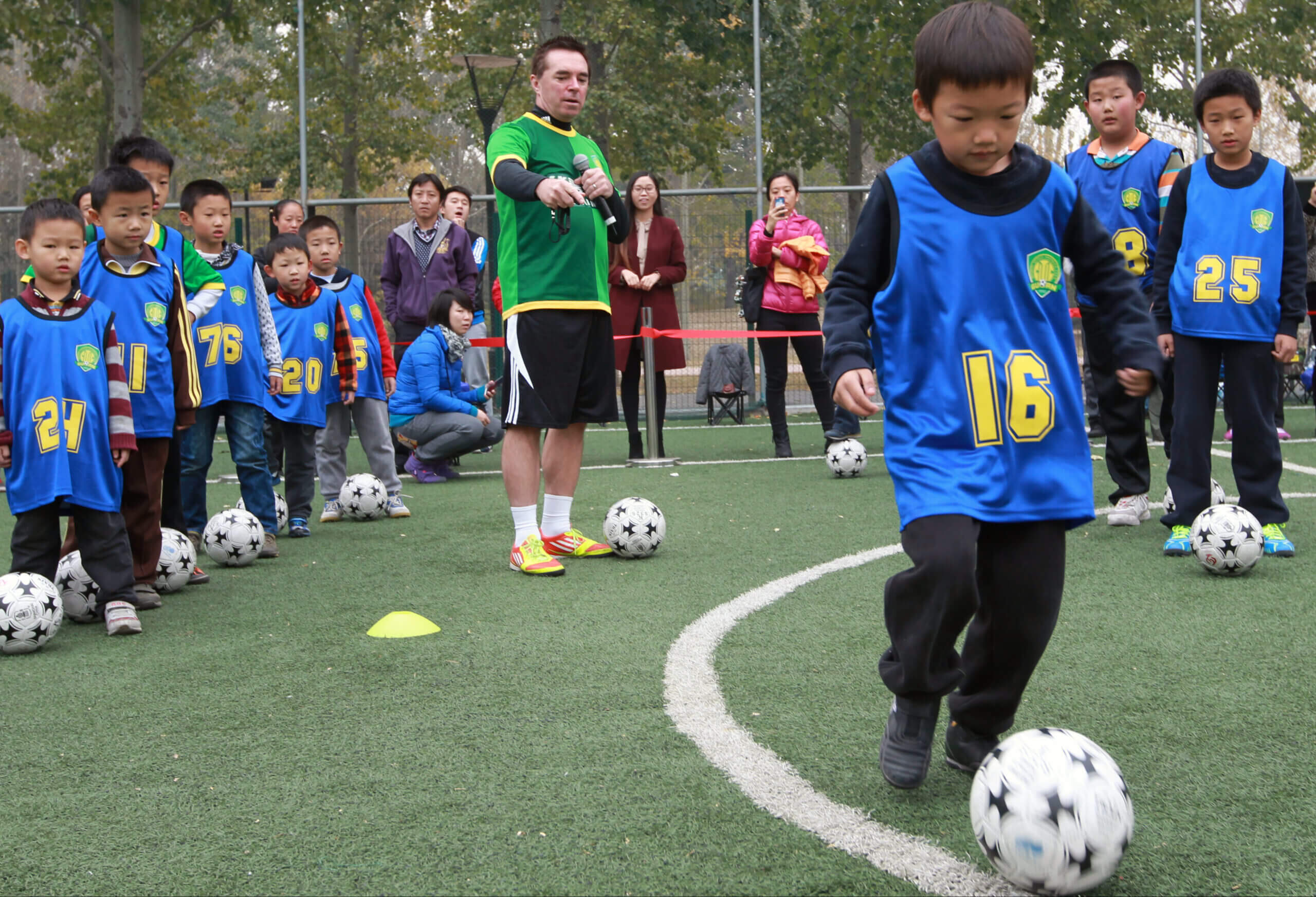
He was instrumental in switching the focus to technique by starting an organisation in 1993 that set up schools that only focused on skill development. They didn’t play in competitions but now there are 150 of them and four of the players who played in Japan’s opening 4-2 win against Vietnam in the Asia Cup — Takumi Minamino, Ayase Ueda, Ritsu Doan and Endo — were graduates.
“We created a big enough movement that was focused on technical skill development, ball mastery and one-vs-one. My whole mantra is that football is all driven by culture.
“The countries that produce the best players don’t necessarily have the best coaching, best facilities or the best curriculum. They’ve got cultures of development that are very conducive to developing players such as Japan. They win the battle at the entry-level.
Advertisement
“I always say that if you want to really change a country, develop a little army of little five- and six-year-old boys and girls that are skilled in ball mastery and then just let them play.
“When you can take the best kids in any country and close the gap between the best 10-, 11- and 12-year-olds, that’s when your elite player pool explodes. That’s what we’re seeing with Japan.”
The increase in the profile of Japanese players has seen several German clubs sign players directly from high schools and universities but all 26 of Japan’s World Cup squad played in the J.League at some stage of their career.
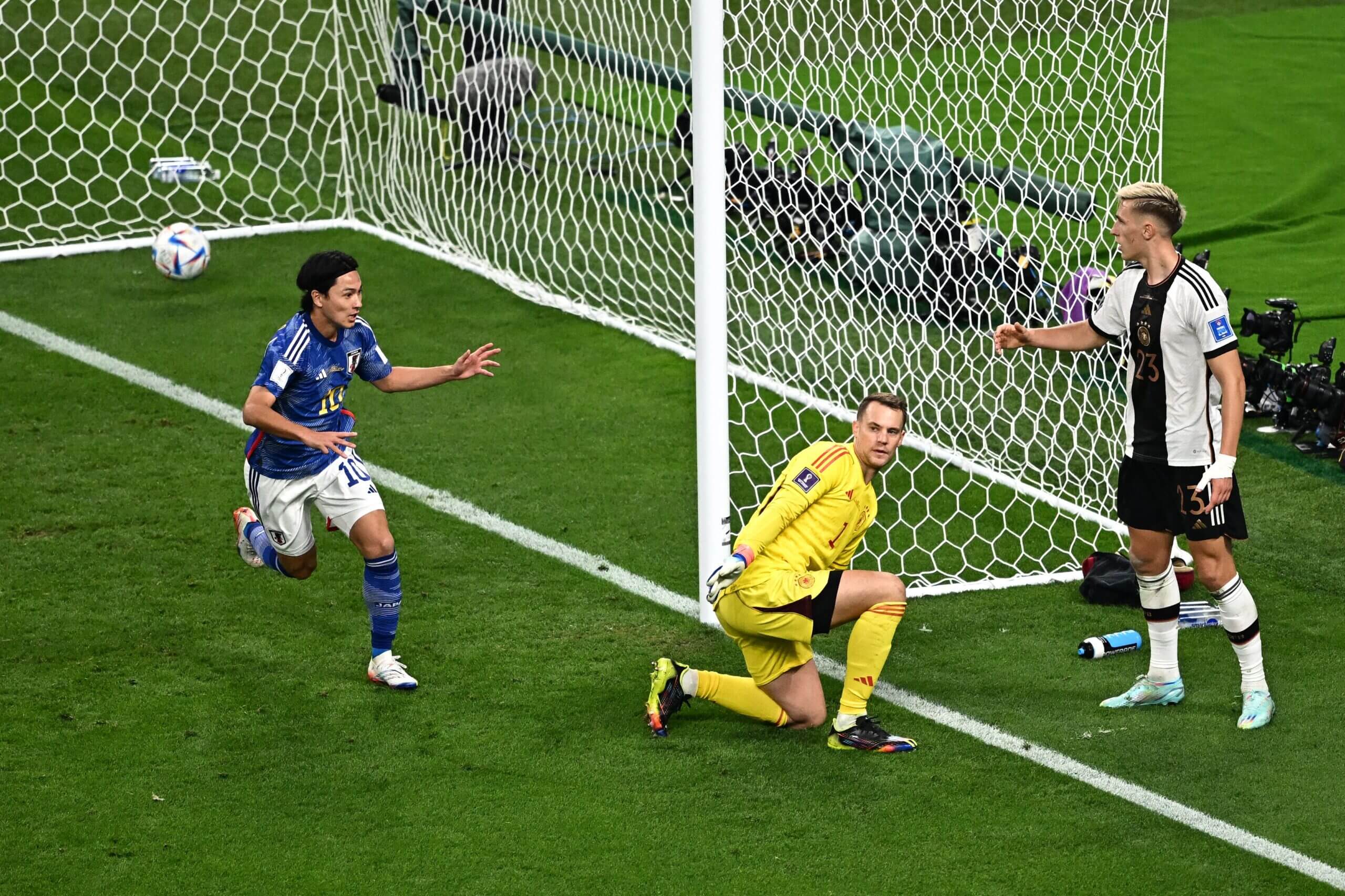
In November, it was announced that 18-year-old striker Keisuke Goto was joining Anderlecht from J2 club Jubilo Iwata on a loan-to-buy deal. He scored 10 goals and provided three assists in 18 games in the under-18 league before netting seven goals in 33 league games in the J2.
One scout says that at 6ft 3in (190cm) and with blistering pace, he has a similar physical frame to Erling Halaand and represents little financial gamble. Clubs are starting to look lower down the pyramid to schools and universities.
“We’ve looked into the high school and uni market quite thoroughly,” adds Hearts’ Savage. “Could they transfer their uni degrees over here as we’re based at Heriot-Watt University? We need to clarify with the Scottish FA how many points they would get for the GBE (governing body endorsement, which an overseas player needs to play in the UK). It is a brilliant market — just look at what Ange said about Mitoma.”
Postecoglou was Yokohama F Marinos boss when Mitoma made his debut for Kawasaki Frontale in 2019 after playing for his university side University of Tsukuba until the age of 23.
“He destroyed us. I knew nothing about him. I said to my opposition guys: ‘Who’s this guy?’,” said Postecoglou.
Advertisement
“They said: ‘He’s just come from uni, how good can he be?’. He’s put his schoolbooks down and he blew us away — him and Hatate, that day.
“It’s easy for me to say that but I was exposed to that different journey and then all of a sudden that changed my thinking. ‘Who cares if he’s been at uni? Are there any other university players that are coming out that we can grab?’.
“Then you take that sort of open-mindedness in your next role. So when I went to Scotland, I thought: ‘Yeah, I’m going to bring three or four Japanese players, they’re gonna make it’. People said to me: ‘That’s a bit radical’.
“And I said: ‘Well no, it’s not actually’.”
(Top photos: Getty Images; design: Eamonn Dalton for The Athletic)



